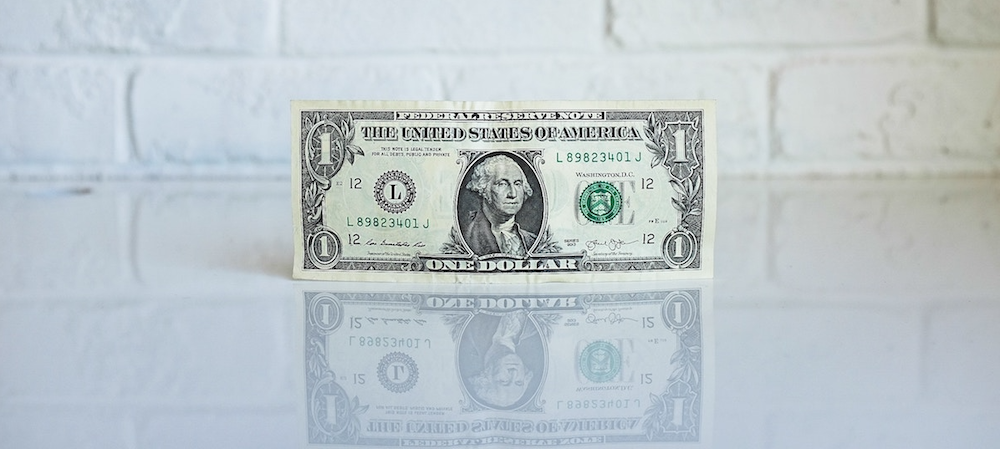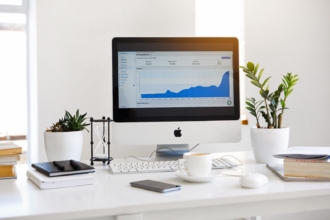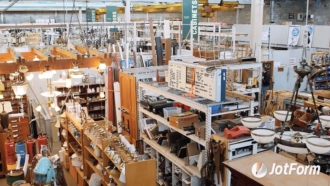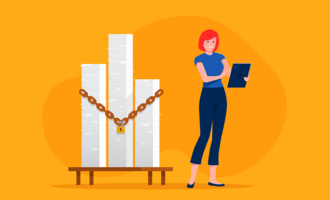Did you know that each knowledge worker in the U.S. uses more than 10,000 sheets of paper in one year?
If you stack all of that paper up, it would be taller than the average five-year-old child. Multiply that by 100 employees, and that’s over one million sheets of paper.
This is bad for the environment, and it’s unnecessary.
According to the EPA, in 2015, we threw away more than 137.7 million tons of trash. The top three items were food, plastics, and paper, coming in at 22 percent, 19 percent, and 13 percent, respectively. Studies show almost half of the paper that we’re printing out will be thrown away on the same day it’s printed.
Going paperless could save both the environment and your wallet. In this post, we’ll share seven of the biggest benefits of a paperless office.
Be more efficient
According to a survey from Xerox, 46 percent of employees waste time every day on paper-intensive processes.
Think about it. Which is easier — locating a paper document, reading it, and then mailing it to a customer or hitting CTRL+F on your computer to find the right file, typing a quick email, and then sending it to your colleague?
It doesn’t take a rocket scientist to see how much more efficient digital files and communication can be.
Pro-Tip
Go paperless in one easy step by signing up for a free Jotform account. Start collecting data, feedback, file uploads, e-signatures, and payments online to boost efficiency and save money.
Switch to digital contracts
One of the biggest uses of paper is contracts for employees, contractors, and vendors. The traditional way of creating contracts involved writing the contract, printing it out, mailing or faxing it, and then waiting for the other person to return it. This process is inconvenient for everyone involved — it can take days.
Tools like Dropbox Sign (formerly known as HelloSign) make it easy to upload a file and get an electronic signature within a matter of minutes.
Eliminate paper receipts and invoices
Whether you’re ordering a $10 cheeseburger meal or receiving an invoice for $10,000, one outcome is the same. You get a printed receipt or invoice. Paper receipts are a pain and can quickly weigh down your purse or filing cabinet.
Since you may be required to show proof of purchase for your taxes, you can’t get rid of them entirely. However, you can digitize them.
That’s what more and more businesses are doing. In 2016, 30 billion electronic invoices were sent.
For businesses that are still stuck on paper receipts, you can do your part to declutter by using an expense tracking app like Expensify.
Collect customer and/or employee data through online forms
Small businesses spend $120 billion every year on printed forms and surveys. Most of that data will be outdated within a few weeks.
You can use an online form builder — such as Jotform — to quickly create, manage, and share custom forms. The best part? You can create and access these digital forms from your laptop, tablet, or smartphone. And when the data becomes stale, you can quickly update it and resend your forms.
Send fewer direct mail pieces and flyers
Every time I check my mailbox, it is 80 percent junk mail, 19 percent bills, and maybe the occasional letter or note that’s interesting. For example, a credit card company once sent me 12 offers in the span of four weeks. That’s three offers per week. Not only is this a complete waste of money, but it also wastes a ton of paper.
Junk mail alone kills 2.6 million trees each year and results in one billion pounds of waste in U.S. landfills.
Save money on office space
When you print out documents and files, you add to your expenses, because you have to buy filing cabinets (or storage), put away the documents, and use staff time building systems to organize and fetch documents. Not to mention all of the clutter this creates.
Converting all of your paperwork to electronic documents will free up tons of space — meaning you can downsize to a smaller space and pay less in rent and maybe even less in staff overhead.
Improve security
With all of the reports about recent hacking, you might think that paper files are more secure than digital ones. However, the opposite is true. Digital, password-protected, encrypted files are far safer than paper ones.
For example, studies show 20 percent of print jobs are never retrieved from the printer. This can leave sensitive information unprotected and susceptible to accidental interception or distribution.
And you don’t have to worry about spilling coffee on a document or it getting lost or damaged in a fire or flood.
***
With Earth Day right around the corner, now is the perfect time to make the switch. The advantages of going paperless will help the environment and your bottom line.























Send Comment:
2 Comments:
More than a year ago
Thank you
More than a year ago
I agree we need to give up paper documents. We must go to without paper documents as it is not so convenient and fast, but it will also better preserve information and make it more accessible.
A lot of paper is also used in the bank. When you want to take a loan you have to fill a lot of papers. But it’s good that there are a lot of best payday loan lenders online, who not only save your time but also use only electronic forms and documents.
I hope that in the near future, humanity will completely abandon paper documents.